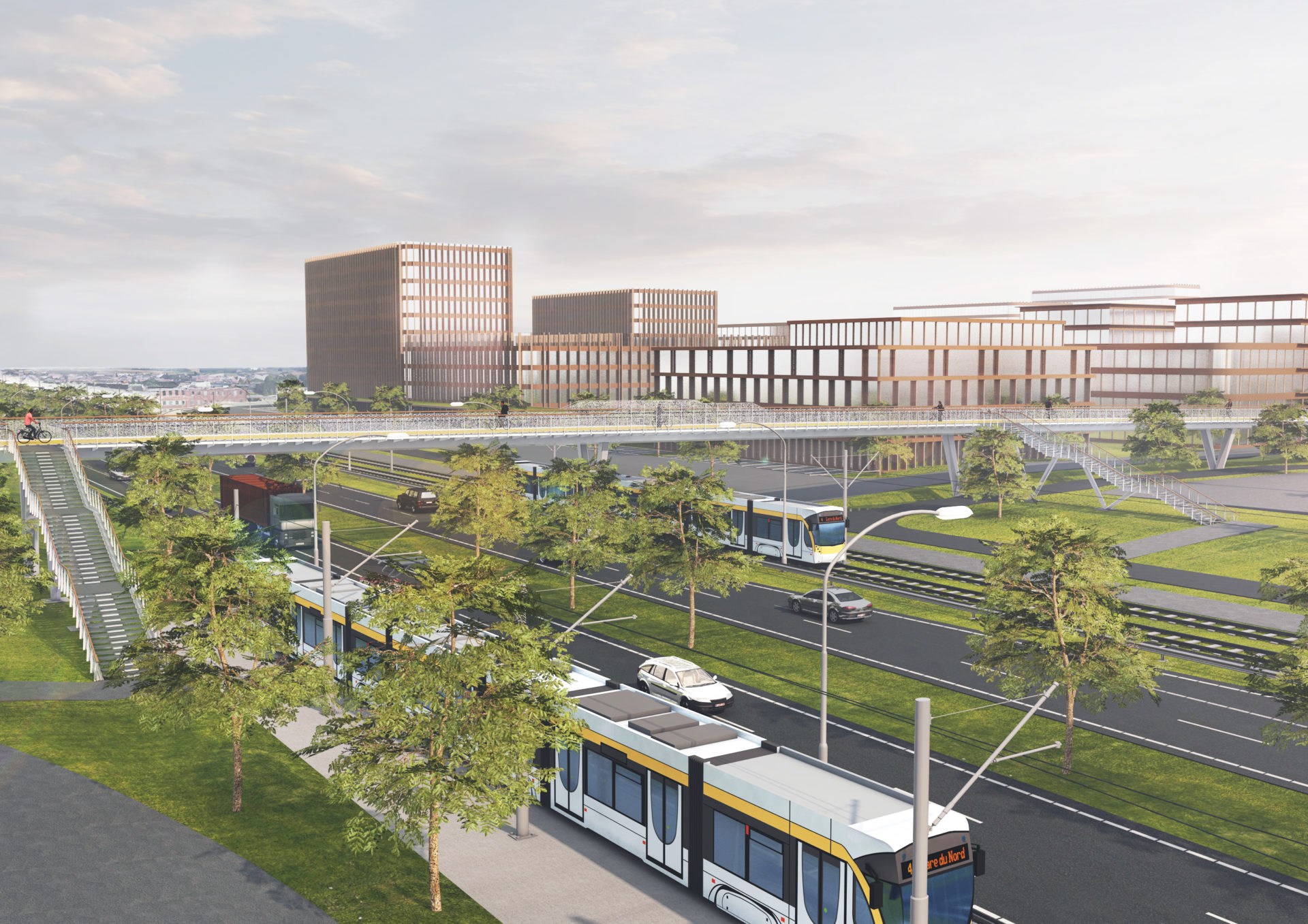Works on a tram line connecting Brussels, the NATO headquarters and Brussels Airport in Zaventem, which could attract up to 10,000 passengers a day, are expected to start in 2024.
As part of the Brabant network project – first launched around 13 years ago – the tram line and adjacent bicycle lane are expected to play a big role in connecting the Flemish towns bordering on the capital.
"This will undoubtedly be an important tram line. According to our social cost-benefit analysis, we calculate a potential of about 10,000 travellers on a normal working day across the whole line," Marijn Struyf, spokesperson for Flemish government organisation De Werkvennootschap which manages large-scale projects funded by the region, told The Brussels Times.
The line will service the NATO Headquarters on Avenue Leopold III in Brussels, but will also be accessible from the old NATO site (currently being developed), as well as other businesses operating in the area, including Toyota and ExxonMobil headquarters.
"These companies also called for this tram line. They all receive a lot of international visitors and sometimes have to provide transport for them, so there is great potential from an ecological point of view," said Struyf.
Related News
- Brussels launches initiatives to improve cyclist and pedestrian safety
- Brussels to Luxembourg by train in two hours soon possible
According to Struyf, the region is considering an extension of Brussels' public transport operator STIB's tram number 62. An additional five kilometres of tramlines would have to be added.
"The line would be extended, probably under a different number and probably not exactly following the route of 62. It will be extended further along Avenue Leopold III and then link to the A201 via the ring road to finally end at the airport," he said.
Despite the project being funded by the Flemish government, Brussels-based STIB would operate the line. As the tram would run both on Brussels and Flemish territory, the organisation must apply for two permits.
"We have just applied for a permit for the tramline itself on Brussels territory, this equates to around 400 metres, and we are also preparing a permit application for the Flemish side," Struyf said.
All permits for the tramline should be submitted by 2022; in 2023, the organisation will look for a contractor for the project. Works are expected to start in 2024 and will most likely take four years.
More than just trams
Further to developing a public transport connection, safe cycling paths are also planned along the entire tramline as part of both regions' efforts to create combined mobility points.
"We are going to provide safe and enclosed bicycle storage facilities next to all the stops, as well as at intersections, creating combined mobility points where you can switch between different modes of transport," Struyf explained.

The bicycle and pedestrian bridge over Avenue Leopold III, which will be linked to the A201 bicycle track. Credit: Werken aan de ring
Included in these plans, totalling around €150 million, De Werkvennootschap is also creating bicycle bridges over the A201 near the Toyota factory, which will help connect future cycle paths next to the tramline – works which are expected to start at the end of this year or at the start of 2022.

